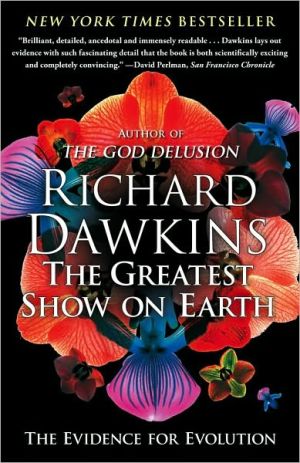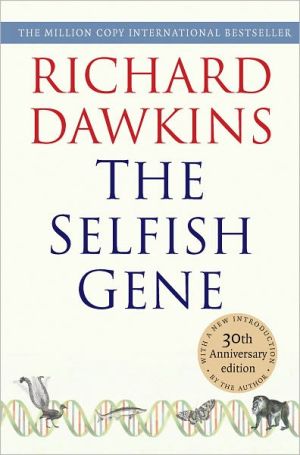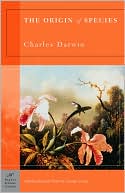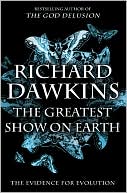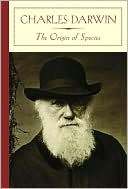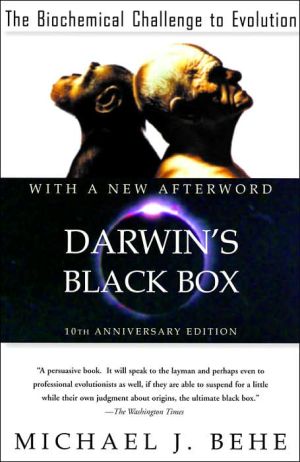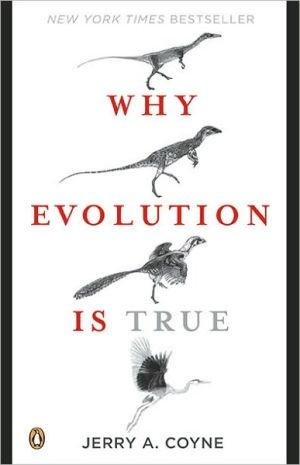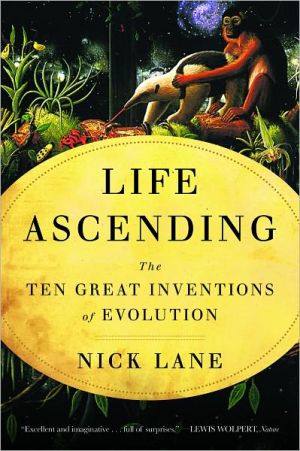Origins: Fourteen Billion Years of Cosmic Evolution
Drawing on the current cross-pollination of geology, biology, and astrophysics, Origins makes "the astonishing astronomical discoveries of recent years come alive (Michael D. Lemonick).\ Origin's explores cosmic science's stunning new insights into the formation and evolution of our universe— of the cosmos, of galaxies and galaxy clusters, of stars within galaxies, of orbiting planets, and of different forms of life. "Distill[s] complex science in clear and lively prose." —Scientific American...
Search in google:
Drawing on the current cross-pollination of geology, biology, and astrophysics, Origins makes "the astonishing astronomical discoveries of recent years come alive (Michael D. Lemonick). Publishers Weekly This is the most informative, congenial and accessible general look at cosmology to come along since Carl Sagan's Cosmos 27 years ago-and, like Cosmos, it's a companion to a PBS series, in this case a Nova special (to air on September 28 and 29). But Tyson (The Sky Is Not the Limit, etc.), who's director of Manhattan's Hayden Planetarium, and Goldsmith (Connecting with the Cosmos, etc.) are no Sagan clones; they bring a distinct point of view and tone to this title. The point of view surfaces right away, both with their concerted effort to draw in numerous branches of science to explain the story of cosmic evolution, and with the statement that "science depends on organized skepticism." The authors continually refer to the reach and limits of science, explaining, as they offer a chronological tour of cosmic history, just what they think science can tell us and what it can't (as they end the journey, focusing on the possibility of extraterrestrial life, they deliver several sharp blows to true believers of UFOs). The tone is informational, aimed at high clarity, and laced with giddy humor: "A hundred billion years from now... all but the closest galaxies will have vanished over our horizon of visibility. Enjoy the view while you can." Beginning at the beginning, Tyson and Goldsmith tackle the origin of the universe and its nature-from antimatter to dark matter and dark energy to the possibility of multiverses; how the universe became organized; the origin of stars; a fascinating look at the periodic table; the origin of planets, including a vivid discuss of planets outside our solar system; and the origin of life. Much of this material will necessarily be familiar to regular readers of popular science, but even they will benefit from Tyson and Goldsmith's incorporation of the latest cosmological developments, from string theory to recent thinking on dark energy; and if this book breaks out, as it has real potential to do, general readers of every stripe will benefit from the authors' sophisticated, deeply knowledgeable presentation. If the casual book buyer purchases one science book this year, this should be the one. (Oct.) Copyright 2004 Reed Business Information.
Preface : a meditation on the origins of science and the science of origins15Overture : the greatest story ever told25Ch. 1In the beginning33Ch. 2Antimatter matters46Ch. 3Let there be light53Ch. 4Let there be dark64Ch. 5Let there be more dark78Ch. 6One universe or many?98Ch. 7Discovering galaxies111Ch. 8The origin of structure122Ch. 9Dust to dust147Ch. 10The elemental zoo167Ch. 11When worlds were young183Ch. 12Between the planets194Ch. 13Worlds unnumbered : planets beyond the solar system204Ch. 14Life in the universe225Ch. 15The origin of life on Earth233Ch. 16Searching for life in the solar system250Ch. 17Searching for life in the Milky Way galaxy274Coda : the search for ourselves in the cosmos291
\ From Barnes & NobleBecause of recent scientific discoveries, our knowledge of the details of cosmic evolution continues to grow. As the director of New York City's Hayden Planetarium, astrophysicist Neil deGrasse Tyson makes his living communicating what we know about the evolution of our universe to the widest possible audience. In Origins, he distills the complex breakthroughs of geology, biology, and astrophysics into clear and lively prose.\ \ \ \ \ Publishers WeeklyThis is the most informative, congenial and accessible general look at cosmology to come along since Carl Sagan's Cosmos 27 years ago-and, like Cosmos, it's a companion to a PBS series, in this case a Nova special (to air on September 28 and 29). But Tyson (The Sky Is Not the Limit, etc.), who's director of Manhattan's Hayden Planetarium, and Goldsmith (Connecting with the Cosmos, etc.) are no Sagan clones; they bring a distinct point of view and tone to this title. The point of view surfaces right away, both with their concerted effort to draw in numerous branches of science to explain the story of cosmic evolution, and with the statement that "science depends on organized skepticism." The authors continually refer to the reach and limits of science, explaining, as they offer a chronological tour of cosmic history, just what they think science can tell us and what it can't (as they end the journey, focusing on the possibility of extraterrestrial life, they deliver several sharp blows to true believers of UFOs). The tone is informational, aimed at high clarity, and laced with giddy humor: "A hundred billion years from now... all but the closest galaxies will have vanished over our horizon of visibility. Enjoy the view while you can." Beginning at the beginning, Tyson and Goldsmith tackle the origin of the universe and its nature-from antimatter to dark matter and dark energy to the possibility of multiverses; how the universe became organized; the origin of stars; a fascinating look at the periodic table; the origin of planets, including a vivid discuss of planets outside our solar system; and the origin of life. Much of this material will necessarily be familiar to regular readers of popular science, but even they will benefit from Tyson and Goldsmith's incorporation of the latest cosmological developments, from string theory to recent thinking on dark energy; and if this book breaks out, as it has real potential to do, general readers of every stripe will benefit from the authors' sophisticated, deeply knowledgeable presentation. If the casual book buyer purchases one science book this year, this should be the one. (Oct.) Copyright 2004 Reed Business Information.\ \ \ Library JournalScientists are achieving a new understanding about the origins of our universe as the disciplines of geology, biology, and astrophysics bleed into one another. Astrophysicist Tyson is the director of New York City's Hayden Planetarium; Goldsmith is an astronomy writer with more than 20 books to his credit. Together, they have crafted a terrific historical perspective on humanity's pursuit of answers that offers insights into the recent findings that have both expanded our knowledge and raised even more intriguing questions. Amateur astronomers--in fact, any reader who enjoys popular science--will find fascinating information presented in clear but never patronizing language. The mysteries of the cosmos have wide appeal, and this reader-friendly title, timed to coincide with the four-part Nova series on PBS in late September, is highly recommended for small academic and all public libraries.--Denise Hamilton, Heritage Christian Sch., Ridge, NH Copyright 2004 Reed Business Information.\ \ \ \ \ Kirkus ReviewsCompanion volume to a PBS Nova special takes a look at the origins of life, the universe, and everything. Hayden Planetarium director Tyson and popular science writer Goldsmith (The Hunt for Life on Mars, 1997, etc.) begin with the earliest time science is capable of describing, milliseconds after the Big Bang. Essential features of our universe were laid down in that unique moment, some of which-e.g., the minuscule excess of matter over antimatter-science is still at a loss to explain. Others, including the prevalence of so-called dark matter and dark energy, have only recently come to notice. After a period of cooling, the debris began to resemble the universe we now see. Gravity, light, and matter became predominant, with galaxies and stars taking shape. The authors give clear explanations of the processes involved as far as they are understood; Tyson and Goldsmith are not afraid to admit ignorance. Within the stars, originally composed almost entirely of hydrogen and helium, the other elements of the periodic table have been synthesized by nuclear fusion and spread about the galaxies in supernova explosions. From these stellar ashes, planets and the other bodies that orbit stars have been formed. The authors give useful updates on the progress in discovery of extra-solar planets (over a hundred are currently known) and of possible abodes of life in our own solar system (Mars, Europa, and Titan are now considered the best candidates). They end with a look at current thinking on the origins of life, a question made more complex by the discovery of extremophiles, creatures that live comfortably in environments formerly considered hostile to life. An accessible and extremely well writtenexploration of the deep waters of cosmology, astrophysics, and exobiology.\ \

